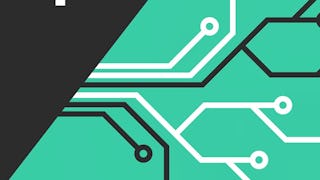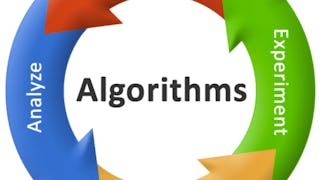In previous courses of our online specialization you've learned the basic algorithms, and now you are ready to step into the area of more complex problems and algorithms to solve them. Advanced algorithms build upon basic ones and use new ideas. We will start with networks flows which are used in more typical applications such as optimal matchings, finding disjoint paths and flight scheduling as well as more surprising ones like image segmentation in computer vision. We then proceed to linear programming with applications in optimizing budget allocation, portfolio optimization, finding the cheapest diet satisfying all requirements and many others. Next we discuss inherently hard problems for which no exact good solutions are known (and not likely to be found) and how to solve them in practice. We finish with a soft introduction to streaming algorithms that are heavily used in Big Data processing. Such algorithms are usually designed to be able to process huge datasets without being able even to store a dataset.


Advanced Algorithms and Complexity
This course is part of Data Structures and Algorithms Specialization



Instructors: Neil Rhodes
86,579 already enrolled
Included with
(700 reviews)
Skills you'll gain
Details to know

Add to your LinkedIn profile
5 assignments
See how employees at top companies are mastering in-demand skills

Build your subject-matter expertise
- Learn new concepts from industry experts
- Gain a foundational understanding of a subject or tool
- Develop job-relevant skills with hands-on projects
- Earn a shareable career certificate

There are 5 modules in this course
Network flows show up in many real world situations in which a good needs to be transported across a network with limited capacity. You can see it when shipping goods across highways and routing packets across the internet. In this unit, we will discuss the mathematical underpinnings of network flows and some important flow algorithms. We will also give some surprising examples on seemingly unrelated problems that can be solved with our knowledge of network flows.
What's included
9 videos5 readings1 assignment1 programming assignment1 plugin
Linear programming is a very powerful algorithmic tool. Essentially, a linear programming problem asks you to optimize a linear function of real variables constrained by some system of linear inequalities. This is an extremely versatile framework that immediately generalizes flow problems, but can also be used to discuss a wide variety of other problems from optimizing production procedures to finding the cheapest way to attain a healthy diet. Surprisingly, this very general framework admits efficient algorithms. In this unit, we will discuss some of the importance of linear programming problems along with some of the tools used to solve them.
What's included
10 videos1 reading1 assignment1 programming assignment
Although many of the algorithms you've learned so far are applied in practice a lot, it turns out that the world is dominated by real-world problems without a known provably efficient algorithm. Many of these problems can be reduced to one of the classical problems called NP-complete problems which either cannot be solved by a polynomial algorithm or solving any one of them would win you a million dollars (see Millenium Prize Problems) and eternal worldwide fame for solving the main problem of computer science called P vs NP. It's good to know this before trying to solve a problem before the tomorrow's deadline :) Although these problems are very unlikely to be solvable efficiently in the nearest future, people always come up with various workarounds. In this module you will study the classical NP-complete problems and the reductions between them. You will also practice solving large instances of some of these problems despite their hardness using very efficient specialized software based on tons of research in the area of NP-complete problems.
What's included
16 videos2 readings1 assignment1 programming assignment1 plugin
After the previous module you might be sad: you've just went through 5 courses in Algorithms only to learn that they are not suitable for most real-world problems. However, don't give up yet! People are creative, and they need to solve these problems anyway, so in practice there are often ways to cope with an NP-complete problem at hand. We first show that some special cases on NP-complete problems can, in fact, be solved in polynomial time. We then consider exact algorithms that find a solution much faster than the brute force algorithm. We conclude with approximation algorithms that work in polynomial time and find a solution that is close to being optimal.
What's included
11 videos1 reading1 assignment1 programming assignment
In most previous lectures we were interested in designing algorithms with fast (e.g. small polynomial) runtime, and assumed that the algorithm has random access to its input, which is loaded into memory. In many modern applications in big data analysis, however, the input is so large that it cannot be stored in memory. Instead, the input is presented as a stream of updates, which the algorithm scans while maintaining a small summary of the stream seen so far. This is precisely the setting of the streaming model of computation, which we study in this lecture. The streaming model is well-suited for designing and reasoning about small space algorithms. It has received a lot of attention in the literature, and several powerful algorithmic primitives for computing basic stream statistics in this model have been designed, several of them impacting the practice of big data analysis. In this lecture we will see one such algorithm (CountSketch), a small space algorithm for finding the top k most frequent items in a data stream.
What's included
10 videos1 assignment1 programming assignment
Earn a career certificate
Add this credential to your LinkedIn profile, resume, or CV. Share it on social media and in your performance review.
Instructors


Offered by
Explore more from Algorithms
 Status: Free Trial
Status: Free Trial Status: Preview
Status: PreviewBirla Institute of Technology & Science, Pilani
 Status: Free Trial
Status: Free TrialFractal Analytics
 Status: Free Trial
Status: Free TrialStanford University
Why people choose Coursera for their career




Learner reviews
700 reviews
- 5 stars
72.85%
- 4 stars
17.71%
- 3 stars
5.28%
- 2 stars
1.85%
- 1 star
2.28%
Showing 3 of 700
Reviewed on Apr 6, 2019
Very informative course with challenging assignments. It will surely make your data structure concepts clearer.
Reviewed on May 14, 2019
This is a very challenging course in the specialization. I learned a lot form going through the programming assignments!
Reviewed on Jul 25, 2019
Very Educational and Enlightening. The only criticism I have is that the starter files generally need more modification than indicated to create a successful program.

Open new doors with Coursera Plus
Unlimited access to 10,000+ world-class courses, hands-on projects, and job-ready certificate programs - all included in your subscription
Advance your career with an online degree
Earn a degree from world-class universities - 100% online
Join over 3,400 global companies that choose Coursera for Business
Upskill your employees to excel in the digital economy
Frequently asked questions
To access the course materials, assignments and to earn a Certificate, you will need to purchase the Certificate experience when you enroll in a course. You can try a Free Trial instead, or apply for Financial Aid. The course may offer 'Full Course, No Certificate' instead. This option lets you see all course materials, submit required assessments, and get a final grade. This also means that you will not be able to purchase a Certificate experience.
When you enroll in the course, you get access to all of the courses in the Specialization, and you earn a certificate when you complete the work. Your electronic Certificate will be added to your Accomplishments page - from there, you can print your Certificate or add it to your LinkedIn profile.
Yes. In select learning programs, you can apply for financial aid or a scholarship if you can’t afford the enrollment fee. If fin aid or scholarship is available for your learning program selection, you’ll find a link to apply on the description page.
More questions
Financial aid available,


